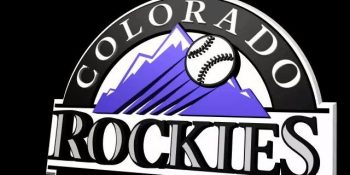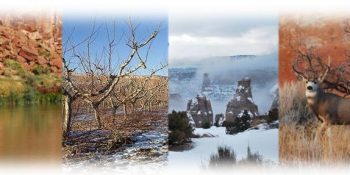Denver Metro Action Day for Visibility
Indoor Burning Restrictions in Effect
An Action Day for Visibility is in effect for the seven-county Denver-Boulder metropolitan area . Indoor Burning Restrictions and requests to limit driving are now in effect until at least 4 PM Wednesday, December 13, 2017. Poor visibility and an exceedance of the state visibility standard are expected on Wednesday. Otherwise, good or moderate air quality conditions are expected. No other air quality advisories are in effect.
Light winds and stagnant conditions will lead to Poor visibility on Wednesday.
For statewide conditions, forecasts and advisories, visit:
http://www.colorado.gov/airquality/colorado_summary.aspx
A poorly maintained vehicle pollutes more than a well maintained one. If you must drive, properly maintain your vehicle. We’ll all breathe easier!
At 2PM (MST), Tuesday, 12/12/2017 the highest AQI value was 51 for Particulate less than 10 micrometers which indicates Moderate air quality. Respiratory symptoms possible in unusually sensitive individuals, possible aggravation of heart or lung disease in people with cardiopulmonary disease and older adults. Unusually sensitive people should consider reducing prolonged or heavy exertion.
Front Range Air Quality Forecast & Colorado Smoke Outlook
Ozone concentrations are expected to be in the Good category .
Fine Particulate Matter concentrations are expected to be in the Good to Moderate range. Moderate concentrations of fine particulates are most likely in locations within the Denver Metro area, particularly near heavy industrial areas, as well as northward along the Front Range Urban Corridor into southern Weld County including Greeley. In these areas unusually sensitive people should consider reducing prolonged or heavy exertion on Tuesday and Wednesday.
Carbon Monoxide concentrations are expected to be in the Good category.
Nitrogen Dioxide concentrations are expected to be in the Good to Moderate range on Tuesday and Wednesday. Moderate concentrations of nitrogen dioxide are most likely for locations within the Denver Metro area near busy roadways, particularly between the hours of 5-9 PM on Tuesday, and again between 6-10 AM on Wednesday. See fine particulate matter above for health recommendations.
Visibility is expected to be Moderate to Poor on Wednesday.
COLORADO SMOKE OUTLOOK:
Light to moderate smoke is possible near prescribed fires and small wildfires around the state.
What if there is a wildfire or smoke in your area?
The focus of the Colorado Smoke Outlook is on large fires (e.g., greater than 100 acres in size). Nevertheless, smoke from smaller fires, prescribed fires, and/or smoke from new fires not yet known to CDPHE air quality meteorologists may cause locally heavy smoke. If there is smoke in your neighborhood, see the public health recommendations below.
Public health recommendations for areas affected by smoke: If smoke is thick or becomes thick in your neighborhood you may want to remain indoors. This is especially true for those with heart disease, respiratory illnesses, the very young, and the elderly. Fine particulates may reach the Unhealthy category where smoke is heavy. Consider limiting outdoor activity when moderate to heavy smoke is present. People with heart or lung disease, older adults, and children should avoid prolonged or heavy exertion; everyone else should reduce prolonged or heavy exertion. Consider relocating temporarily if smoke is present indoors and is making you ill. IF VISIBILITY IS LESS THAN 5 MILES IN SMOKE IN YOUR NEIGHBORHOOD, SMOKE HAS REACHED LEVELS THAT ARE UNHEALTHY.
Winter High Pollution Advisory Program
The Winter High Pollution Advisory Program is coordinated by the Air Pollution Control Division of the Colorado Department of Public Health and Environment.
Winter season air pollution forecasts are issued daily from October 31 through March 31 at 4 p.m. When conditions warrant, forecasts will include information about Action Days and subsequent indoor burning restrictions.
An Action Day for fine particulates, carbon monoxide or ozone indicates that either current air quality is unhealthy or conditions are expected to worsen later in the day or on the next day. Action Days for air pollutants generally indicate that air quality will be in either the Unhealthy or Unhealthy-for-Sensitive-Groups categories according to the Air Quality Index. Action Days trigger mandatory restrictions that limit indoor burning to approved devices only (see indoor burning below), voluntary driving reductions, and public health recommendations.
An Action Day for Visibility alone indicates that the Visibility Standard Index for visual air quality is expected to be poor on the current or following day. An Action Day for Visibility will trigger mandatory restrictions on indoor burning and voluntary driving reductions for the seven-county Denver-Boulder metropolitan area only.
When no advisories are issued, air quality is good or moderate and is expected to remain so during the effective period of the forecast. No restrictions are in place.
Additional Information
ACTION DAYS: An Action Day for fine particulate matter (particulates), carbon monoxide, ozone or other pollutants indicates that either current air quality is unhealthy or conditions are expected to worsen later in the day or on the next day. Action Days for air pollutants generally indicate that air quality will be in either the Unhealthy or Unhealthy-for-Sensitive-Groups categories according to the Air Quality Index. Action Days trigger voluntary pollution prevention measures, which may vary by season, and public health recommendations. In addition, during the winter ‘high pollution day’ season (October 31 to March 31), Action Days trigger mandatory restrictions that limit burning inside the home to approved devices only (see indoor burning below).
Action Days for Visibility alone are issued during the winter ‘high pollution day’ season (October 31 to March 31), only. At the time they are issued (4 PM), action days for visibility indicate that the Visibility Standard Index for visual air quality is expected to be poor on the following day. Action Days for Visibility trigger mandatory restrictions that limit indoor burning to approved devices only and voluntary driving reductions for the seven-county Denver-Boulder metropolitan area .
The VISIBILITY STANDARD INDEX reports the air’s visual quality in the seven-county Denver-Boulder metropolitan area. The visibility standard is 0.076 per kilometer of atmospheric extinction, which means that 7.6 percent of the light in a kilometer of air is blocked. The level must exceed the standard based on a four-hour average for a violation to occur. On the Visibility Standard Index Scale, a value of 101 equates to the 0.076/km standard. Values between 0-50 are good, 51-100 moderate, 101-200 poor and 201-plus extremely poor.
The AIR QUALITY INDEX reports the daily level of air pollution on an hourly basis. The index reports the highest level of either carbon monoxide, fine particulates or ozone depending on which pollutant has the greatest hourly concentration. Values greater than 100 for carbon monoxide, fine particulates and ozone indicate exceedances of the pollutant’s state and federal standards. Air Quality Index values between 0-50 are good, 51-100 moderate, 101-150 unhealthy for sensitive groups, 151-200 unhealthy, 201-300 very unhealthy, and over 300 hazardous.
INDOOR BURNING: On Action Days issued during the winter ‘high pollution day’ season (October 31 through March 31), mandatory restrictions that limit indoor burning to approved devices only generally apply to everyone in the entire seven-county Denver-Boulder metropolitan area below 7,000 feet . The restrictions will be enforced through local ordinances or a state regulation.
The state regulation applies to any community in the seven-county Denver-Boulder metropolitan area that did not have its own mandatory indoor burning ordinance in effect on January 1, 1990. Under this regulation, the only exceptions to the burning restrictions are for residences above 7,000 feet in the seven-county Denver-Boulder metropolitan area ; and those who use Colorado Phase III (Phase II EPA) certified woodburning stoves, Colorado approved pellet stoves, approved masonry heaters or those whose stoves or fireplaces are their primary source of heat. For more information on indoor burning, call the Air Pollution Control Division at (303) 692-3100.
For more, go to: http://www.cdphe.state.co.us/ap/woodhome.html
COLORADO OPEN BURN FORECAST: For those with permits for Open Burning, that is burning of waste materials or vegetation outside, check the following webpage to find out if open burning is allowed today:
http://www.colorado.gov/airquality/burn_forecast.aspx
Summer Ozone Program
For an AQI value that considers all pollutants, please click here .
Ground-level ozone is a summertime air pollution problem that is created when other pollutants from sources like vehicle exhaust, paints, degreasing agents and cleaning fluids react with sunlight. Exposure to ground-level ozone can cause acute respiratory problems, reduced lung capacity and inflammation of lung tissues and can trigger asthma attacks.
Ground-level ozone should not be confused with the protective stratospheric ozone layer miles above the Earth’s surface. This naturally-occurring ozone layer protects the Earth’s surface from excessive ultra-violet radiation.
Do your share and be a part of the solution to the Denver-metropolitan area’s summertime air pollution problems. These easy strategies will help reduce the harmful vapors that react in sunlight to create summertime air pollution:
At Home:
Tightly cap all solvents (paint thinners and strippers, degreasers, and some cleaning products). Solvents contain pollution-causing vapors. Postpone painting, stripping and refinishing projects to avoid the morning and mid-day summertime heat. Better yet, wait until the Fall or Spring. Use water-based products (paints, stains and sealants).
In the Yard:
Delay mowing your lawn to another day. Don’t mow, let it grow! Avoid using high-emitting, gasoline-powered yard equipment. Electric alternatives are an efficient, environmentally-friendly alternative. Use an electric starter or a “charcoal chimney” to start your barbeque grill. Lighter fluid contains a lot of harmful vapors that escape into our air and contribute to summertime air pollution.
On the Go:
Stop at the click when refueling your car. Overfilling your tank often results in fuel spills and always allows unnecessary pollution-causing vapors to escape into our air. Refuel in the evenings after dusk. By refueling after the sun goes down, fuel vapors do not have as much of a chance to “cook” in the mid-day sun and become harmful ground-level ozone. Maintain your vehicle. A poorly-maintained vehicle can pollute as much as 25 times more than a well-maintained one.
SPREAD THE NEWS
COMMENT, Like, Follow & SHARE @I70Scout









